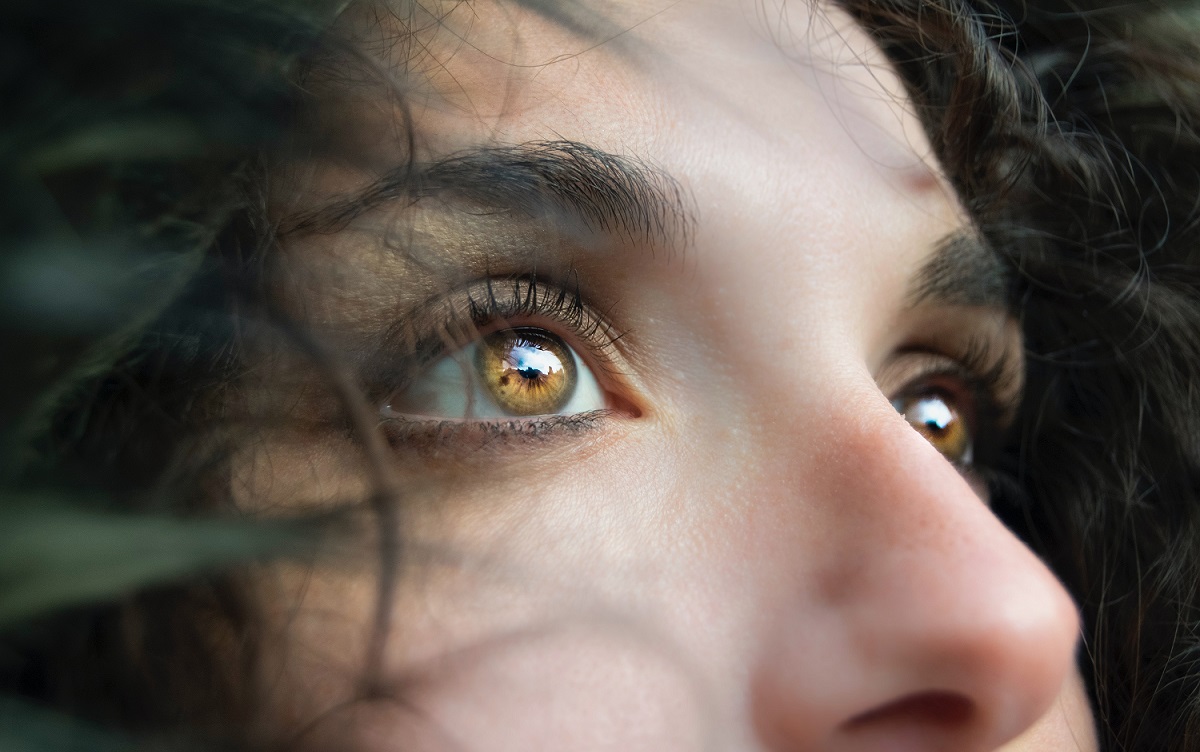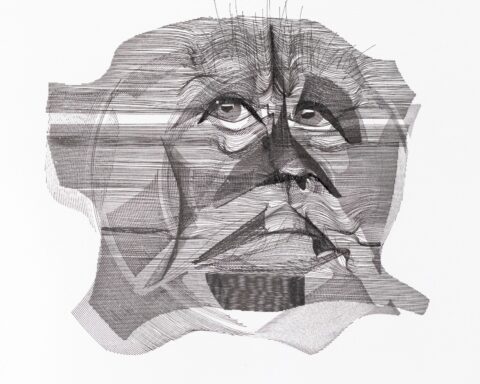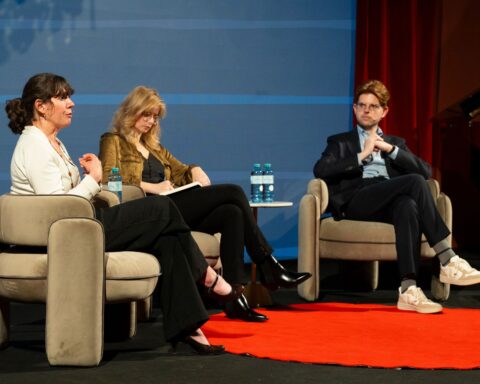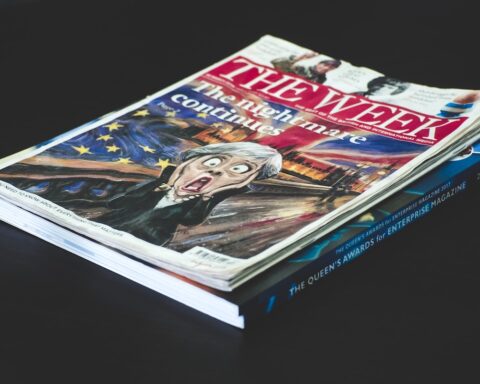Recent developments aiming towards social change have attempted to achieve greater representation of minority groups in all areas of our society. Especially in popular culture and the entertainment industry, we can see efforts to include more women, members of the LGBTQIA+ community, and People of Color as protagonists, as well as an increased focus on authentic experiences. The aim is to move away from the traditional focus on cishet white men’s stories where e.g. women only play the supporting roles and explore other ways of narrative cinema. The now widespread term ‘male gaze’ is used to dismantle the hierarchical power systems often prevalent in traditional cinema, but many have long been wondering if a ‘female gaze’ can exist in our patriarchal society, too.
In her essay “Visual Pleasure and Narrative Cinema” Laura Mulvey uses a psychoanalytic approach to analyze how film codes create a ‘gaze’, a world, and an object by manipulating the dimensions of time and space in a film. Without going into details, it becomes evident that the male gaze prevents women from being represented according to their own terms. Mulvey argues that the male gaze reinforces a patriarchal vision where women are submissive so as to elicit desire and pleasure for the male protagonist (and male spectator). Iris Brey, a French author, journalist and film critic who is also interested in cinematic codes, adds that female experiences, both physiologically and sociologically are neglected and invisibilized, as though they have no importance at all.
As a consequence, we can observe a lack of substantial knowledge around female experiences and unrealistic expectations of women’s bodies in the real world. You can easily find videos on the internet where men are asked about the anatomy of female bodies only to realize how little they know about women’s bodies (e.g. the ROE v BROS on YouTube). Only recently a (funny? sad?) translation error occurred in the sports world: The skier Mikaela Shiffrin mentioned (in English) her monthly cycle during a TV interview, which was translated into German by the Austrian TV channel ORF as ‘cycling’. How can anyone be interested in something if they don’t even know it exists?
A look at recent statistics shows that equality in terms of representation is far from being achieved; however, these developments have nonetheless caused an uproar from (white, cisgender, straight, male) people, who fail to understand why they are suddenly not the center of attention anymore.
These people also often express their discontent with any other feminist issue, arguing that gender equality has been achieved long ago and that it is now men who are being oppressed by the queer feminist agenda. Reading and listening to these comments would make an educated and informed person think that these remarks are redundant and can be ignored, given their illogical and incoherent nature. A look at the dark side of social media proves that this is unfortunately something we cannot afford. Millions of young people are confronted with and influenced by alt-right ideologies that spread like wildfire across the internet, selling dangerous ideas in the form of self-help and self-improvement.
The misery of living in a capitalist world in which individuals only feel valuable or worthy when they are productive, and the persisting disease of toxic masculinity have led countless people to look up to individuals such as Jordan Peterson or Andrew Tate. Such individuals perpetuate harmful ideas that uphold binary systems of gender and the therein inherent hierarchical power relations between men and women. Unfortunately, their nonsense is deeply contagious: Teachers have been forced to introduce classes to teach gullible young teenagers why such ideas are problematic. A crowd of young men recently gathered in a town in Greece, chanting “Free top G” to protest the detainment of Andrew Tate, who is now in prison for human trafficking.
Why do these men consider women as objects and why do they think they have a right to women’s bodies? The world of cinema offers us an answer, as directors are still predominantly (white, cis, straight) men and stories often seem to prefer the male perspective. Women, on the other hand, are assigned roles that lack any depth of character and are then portrayed as objects that only serve to satisfy the desires of the male protagonist and the male viewer. It therefore becomes evident that it is not enough to simply portray more women, but to carefully consider how they are portrayed.
Media creates reality. Reality creates media. Representation is a powerful tool that has the power to change people’s perception, to represent or to invisibilize. Some theories about representation in cinema have made it possible to identify cinematic codes that establish power relations between the protagonists on screen, as well as between the protagonists and the spectators. Thus, the male protagonist is often the driving force of the story, the female character the object of desire. Seeing how this objectification is reflected in the real world, we can therefore conclude that films strongly influence the way an individual perceives their own world and the roles of others. Furthermore, this also raises the question of whether another way of ‘looking’ is possible, or whether it even exists already.
For many women, the #MeToo movement represented a liberation from this tyrannical and often internalized gaze, as feminist scholars underline: On the one hand, victims of sexual abuse and harassment could make their voices heard, on the other hand, women who used the hashtag signaled their discontent and a willingness to step outside of traditional conventions. Similarly, another way of ‘looking’ in the context of cinema increasingly becomes of interest. Long considered a myth, the female gaze is finally theorized by Iris Brey in her book Le regard féminin.
While Mulvey used psychoanalysis and its processes of identification with the main character to describe the male gaze, Brey uses a phenomenological approach to define the female gaze:
“The phenomenological approach allows us to reflect on the female gaze in two ways. First, by reflecting on what happens within the film: how is the female character a body affected by a story? How is the lived experience of this character depicted? […] How do we feel as spectators?” (Brey in Le regard féminin, pp. 44-45, translated from French)
It becomes clear then, that the female gaze is not simply a mirror concept of the male gaze, but a whole new way of perceiving a female character. It is a tool that makes it possible to be at the side of the female character and to feel the experiences she has had without the aspect of identification. Brey points out that the difference between feeling and identifying is crucial, as this is how her approach differs from psychoanalysis. While the male gaze treats bodies as objects of desire and relies on voyeurism and non-consent, the female gaze, according to Brey, treats bodies as subjects of desire and produces conscious images by refusing the illusionist mechanisms of cinema. Thus, gazes are not only exchanged between characters in the film, but the aesthetic also invites viewers to participate in the exchanges.
Narratively, Brey states, it is required that the main character identifies as a woman, that the story is told from her point of view and that her story challenges the patriarchal order. From a formal point of view, it is necessary that the viewer perceives the female experience through staging; if bodies are eroticized, the gesture must be conscious. Finally, the pleasure of the spectators does not derive from a scopic impulse (i.e. to take pleasure in looking at a person by objectifying them, like a voyeur).
Brey argues that the use of the female gaze is not just reserved for female directors. On the contrary, the aesthetic is quite inclusive and could both be generated by a white, cis male over 50, as well as a 20-year-old Black trans woman. According to the theorist, “the female gaze can help us see and look outside the dominant model”.
So does the female gaze have the potential to achieve social change and gender equality? It is definitely clear that representation in film, while important and necessary, is not the only challenge we must overcome: The work should start much earlier and teach young people to critically evaluate the images they encounter, no matter where they come from. By combining better education in schools (or anywhere else frankly) with better representation on screen, we might even achieve a deeper understanding and appreciation of film that goes beyond patriarchal norms.
Header image by Marina Vitale on Unsplash
Reviewed by Ipek Yilmaz, proofread by Julia Zmölnig





